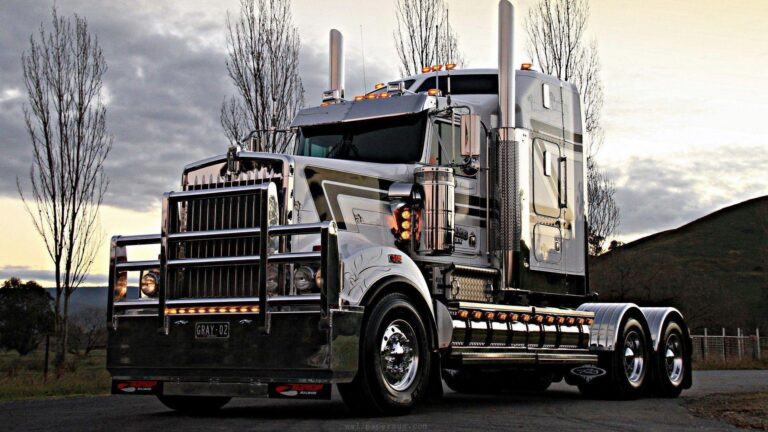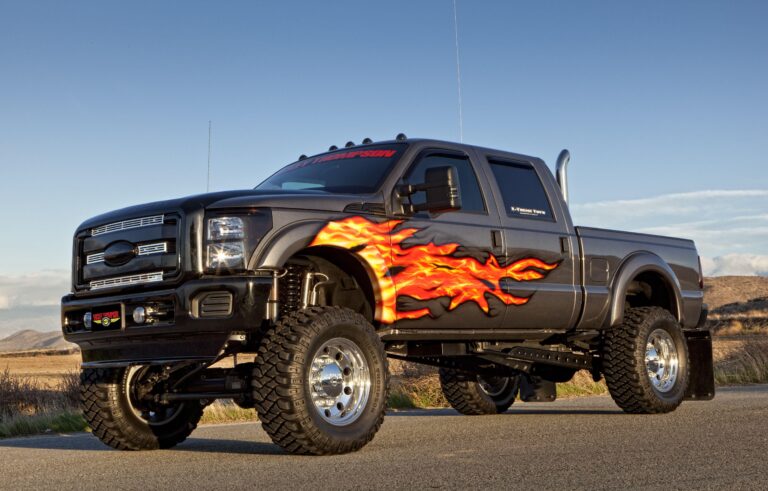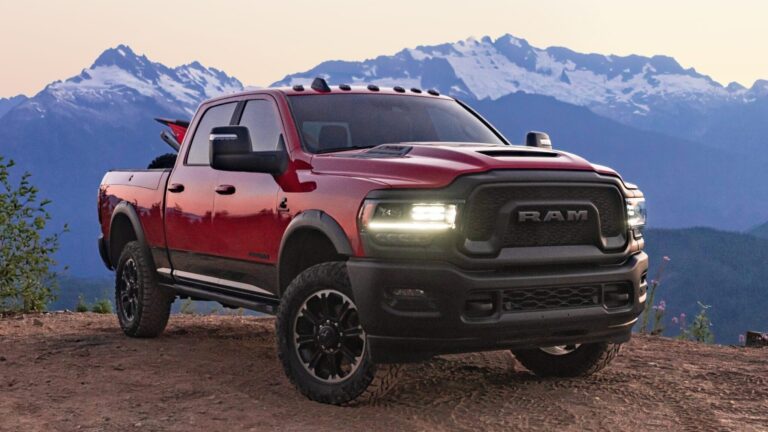Cheap Old Chevy Trucks For Sale: Your Guide to Finding a Timeless Workhorse or a Dream Project
Cheap Old Chevy Trucks For Sale: Your Guide to Finding a Timeless Workhorse or a Dream Project cars.truckstrend.com
The rumble of a classic V8, the unmistakable lines of an iconic American design, and the promise of a simpler, more robust era – these are just a few reasons why the allure of cheap old Chevy trucks remains undimmed. For many, a vintage Chevrolet pickup isn’t just a vehicle; it’s a piece of history, a canvas for customization, a reliable workhorse, or a deeply personal restoration project. But what does "cheap old Chevy truck" truly mean in today’s market, and how do you navigate the often-murky waters of finding one that fits your budget and ambitions?
This comprehensive guide will delve into everything you need to know about finding, evaluating, and potentially owning one of these beloved machines. From identifying the most sought-after models to understanding the hidden costs and the joy of the journey, we’ll equip you with the knowledge to turn your vintage Chevy dream into a tangible reality.
Cheap Old Chevy Trucks For Sale: Your Guide to Finding a Timeless Workhorse or a Dream Project
The Enduring Appeal of Vintage Chevy Trucks
Chevrolet trucks have been an integral part of American life for over a century, hauling everything from farm produce to construction materials, and serving as faithful companions on countless adventures. Their appeal stems from a potent blend of rugged utility, timeless aesthetics, and mechanical simplicity that makes them relatively accessible for DIY enthusiasts.
The "cheap old Chevy truck" market primarily focuses on models from the 1950s through the late 1990s. These vehicles offer a distinct character absent in modern trucks – a tangible connection to automotive heritage. Whether you’re drawn to the curvaceous fenders of a Task Force era truck, the sleek lines of a ’67-’72 C/K, the rugged utility of a ’73-’87 "Square Body," or the burgeoning classic status of a ’88-’98 GMT400, there’s a Chevy truck for every taste and budget. They represent an opportunity for affordable entry into classic car ownership, offering a chance to learn mechanical skills, express creativity, and own a vehicle that truly stands out.
Defining "Cheap": What to Expect in Different Price Ranges
The term "cheap" is highly subjective when it comes to old vehicles. For a vintage Chevy truck, "cheap" generally refers to a vehicle that requires significant work, is non-running, or has considerable cosmetic and mechanical issues. However, it can also mean a solid daily driver that just needs some TLC. Understanding these categories is crucial for setting realistic expectations.
- Under $2,000 (Parts Truck/Deep Project): At this price point, you’re likely looking at a non-running vehicle, often incomplete, with extensive rust, a seized engine, or significant frame damage. These are typically bought for parts, or by experienced restorers looking for a ground-up rebuild. Expect to replace nearly everything.
- $2,000 – $5,000 (Running Project/Rough Driver): Here, you might find a truck that runs and drives, but perhaps not reliably or safely for long distances. It will have considerable rust, worn interior, tired mechanics, and likely non-functional accessories. This is the sweet spot for many budget-conscious DIYers who want a solid foundation for a long-term project.
- $5,000 – $10,000 (Solid Driver/Light Project): In this range, you can often find a truck that’s a decent daily driver, perhaps with some minor mechanical issues or cosmetic blemishes. Rust might be present but often localized and repairable. The engine and transmission are typically functional, and the interior might be rough but complete. These are good options for someone who wants to enjoy their truck while gradually improving it.
- $10,000+ (Restored/High-Quality Driver): While still "old Chevy trucks," these are typically beyond the "cheap" category. They might be well-preserved originals, partially restored, or even fully customized. This price point indicates a truck that’s ready to enjoy with minimal immediate work.

Where to Find Your Next Project (or Driver)
Finding a cheap old Chevy truck requires patience, persistence, and knowing where to look.
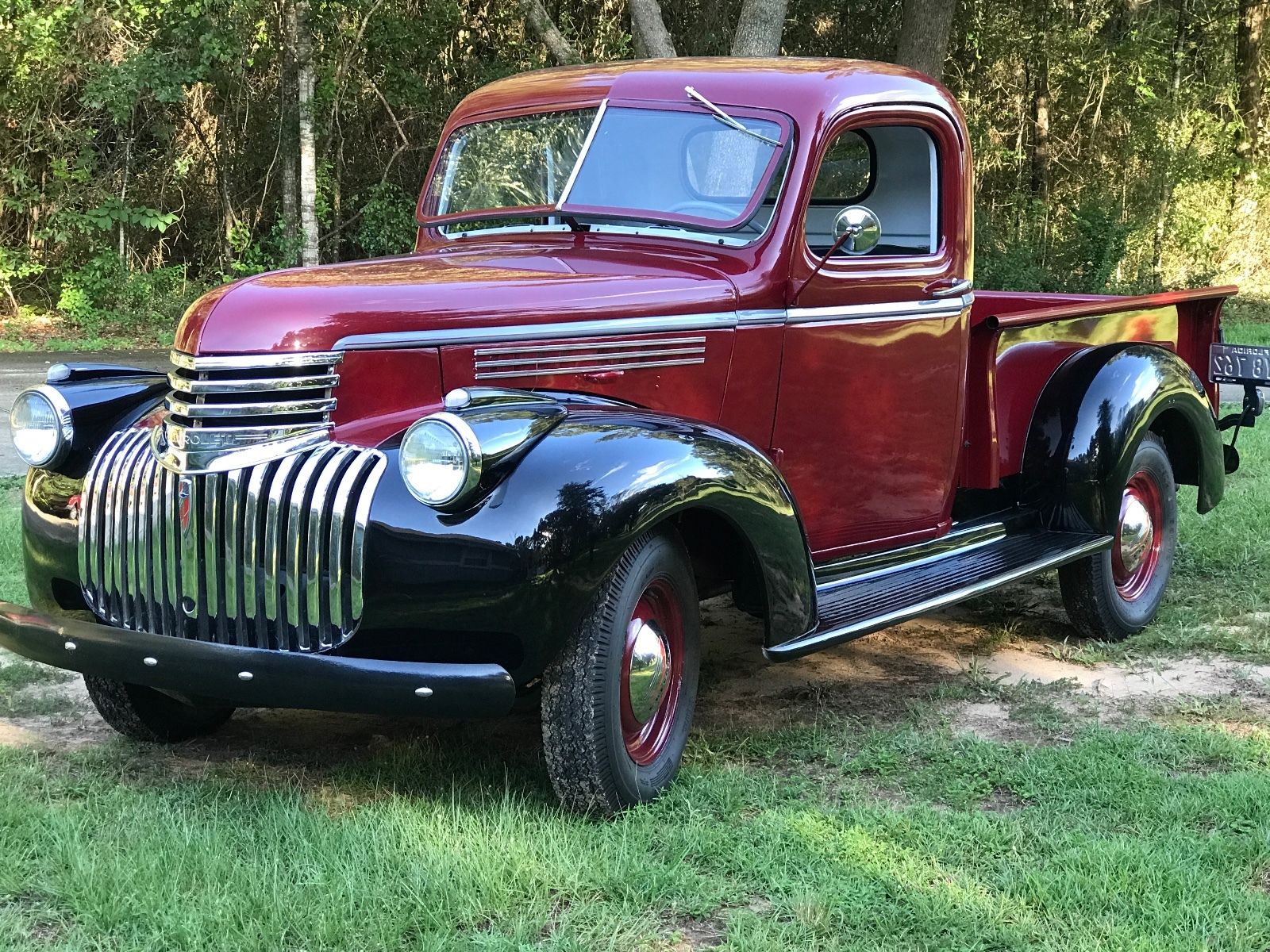
- Online Marketplaces:
- Facebook Marketplace/Groups: Excellent for local finds, often with direct contact with sellers. Join specific groups for vintage Chevy trucks (e.g., "Squarebody For Sale," "C10 Parts & Trucks").
- Craigslist: Still a reliable source for private sellers. Be wary of scams and always inspect in person.
- eBay Motors: Good for nationwide searches, but shipping costs can be prohibitive for cheap trucks.
- Specialized Forums/Websites: Sites like ClassicCars.com, Hemmings, and dedicated Chevy truck forums often have classifieds.
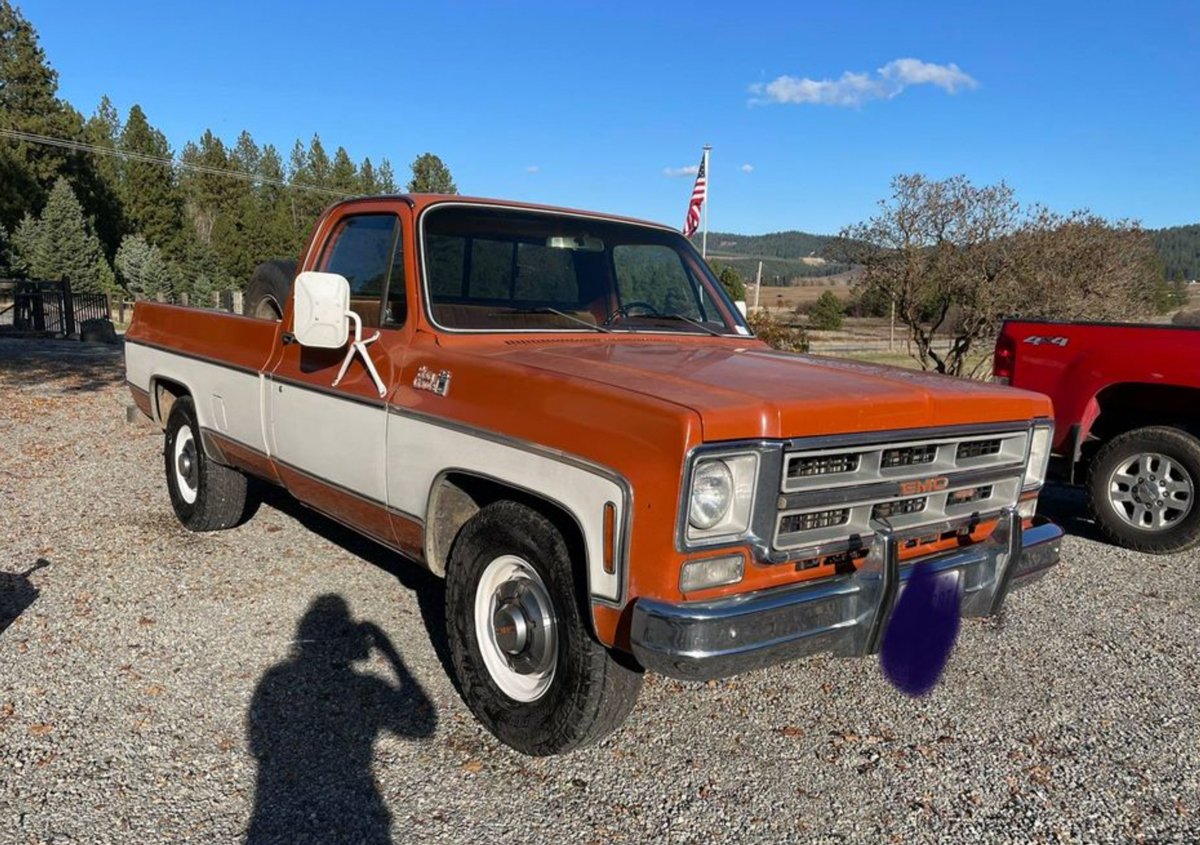
- Local Avenues:
- Word of Mouth: Tell everyone you know you’re looking. Many old trucks sit in barns or backyards, waiting for a new owner.
- Farm Auctions/Estate Sales: Often uncover forgotten gems, but be prepared to bid quickly and know what you’re looking at.
- Local Classifieds/Newspapers: Still a thing in some rural areas.
- Driving Around: Keep an eye out for trucks sitting neglected on properties. Sometimes a friendly note can lead to a sale.
- Salvage Yards/Junkyards: Not for buying a running truck, but excellent for finding specific parts or even entire donor vehicles at rock-bottom prices.
Key Models to Look For (and Their Common Issues)
Understanding the different generations and their common quirks will significantly aid your search.
- Advance Design (1947-1955) & Task Force (1955-1959):
- Appeal: Iconic, curvaceous styling; truly classic.
- Common Issues: Extensive rust (especially cab corners, floor pans, fenders), worn out original drivetrains, primitive brakes/suspension, difficult to find body parts.
- "Glamour" or "C/K" Generation (1960-1966):
- Appeal: Unique styling (particularly the "eyebrow" hoods), good parts availability.
- Common Issues: Rust in rockers, cab corners, and beds; often have inline-six engines which might feel underpowered by modern standards; early independent front suspension can be worn.
- "Action Line" or "C/K" Generation (1967-1972):
- Appeal: Arguably the most popular and desirable generation; clean lines, V8 power, good parts support, relatively easy to modify.
- Common Issues: Rust (rockers, cab corners, lower fenders, bed floors/sides), worn suspension components, tired original engines/transmissions, often overpriced due to demand.
- "Square Body" (1973-1987, and 1988-1991 R/V series):
- Appeal: Robust, utilitarian, incredibly popular, massive aftermarket support, relatively affordable, easy to find.
- Common Issues: Rust (cab corners, rocker panels, floor pans, bed sides, around windshield), electrical gremlins, worn out interiors, saggy springs.
- GMT400 (1988-1998):
- Appeal: Modern conveniences (fuel injection, A/C, power options), still robust, excellent parts availability, becoming a classic in its own right, often the "cheapest" entry point.
- Common Issues: Rust (rear fender wells, cab corners, rocker panels), clear coat peel, worn interior plastics, potential ABS/brake issues, fuel pump failures.
The Art of Inspection: What to Look For Before You Buy
Never buy an old truck sight unseen. A thorough inspection is paramount, even for a "cheap" truck. Bring a flashlight, a magnet (for checking body filler), and a knowledgeable friend if possible.
- Frame: The backbone of the truck. Look for bends, cracks, previous repairs (especially bad welds), and excessive rust. Surface rust is fine, but deep, flaky rust or rot is a dealbreaker.
- Body:
- Rust: Check notorious areas: cab corners, rocker panels, floor pans, bed floor, inner fenders, around windows, and wheel arches. Use a magnet to detect thick body filler over rust holes.
- Panel Alignment: Gaps between panels can indicate accident damage or poor repair work.
- Cab Mounts: Ensure the cab is securely mounted and the mounts aren’t rusted through.
- Engine & Drivetrain:
- Fluid Leaks: Look under the truck for oil, transmission fluid, or coolant leaks.
- Engine Bay: Check for signs of neglect (dirty, loose wires, cracked hoses).
- Start-up: Listen for knocks, ticks, or excessive smoke. Check exhaust for blue (oil), white (coolant), or black (rich fuel) smoke.
- Transmission: Check fluid level and color (should be reddish, not brown or black). Listen for grinding or slipping during a test drive (if possible).
- Differential: Check for leaks, listen for unusual noises.
- Interior:
- Seats/Dash/Door Panels: Assess condition. Replacements can be costly.
- Electrical: Test lights, wipers, horn, radio, and any power accessories.
- Smell: Musty odors can indicate water leaks or mold.
- Suspension & Steering:
- Tires: Check wear patterns (uneven wear indicates alignment issues or worn components).
- Shocks/Springs: Look for leaks or severe rust. Bounce each corner to check dampening.
- Steering Play: Excessive play in the steering wheel indicates worn steering box or linkage.
- Brakes: Check pedal feel. Spongy pedal indicates air or leaks. Look for leaks at wheels.
- Crucial. Ensure the VIN matches the title and the truck. Check for salvage or rebuilt titles, which can affect insurance and resale. A clear title is a must.
Budgeting Beyond the Purchase Price: Hidden Costs and Considerations
The "cheap" purchase price is often just the tip of the iceberg. Be prepared for significant additional expenses.
- Parts: Even common parts for popular models can add up quickly, especially for body panels, trim, or specialized engine components.
- Tools: If you plan to DIY, you’ll need a decent set of tools, including jacks, stands, wrenches, welders, and possibly specialized equipment.
- Fluids/Consumables: Oil, coolant, brake fluid, filters, spark plugs, wires – these are ongoing costs.
- Tires: Old trucks often need new tires, which can be a significant expense.
- Paint & Bodywork: This is often the most expensive part of a restoration. Professional paint jobs can cost thousands.
- Upholstery/Interior: Replacing seats, headliner, carpet, and door panels can be costly.
- Mechanical Overhaul: An engine rebuild, transmission refresh, or brake system overhaul can quickly double your initial investment.
- Insurance & Registration: Factor in classic car insurance (often cheaper than modern car insurance) and registration fees.
- Unexpected Repairs: Old vehicles are unpredictable. Always have a contingency fund.
DIY vs. Professional Restoration: Weighing Your Options
The path you choose will largely depend on your skills, time, and budget.
- DIY (Do-It-Yourself):
- Pros: Significantly cheaper in terms of labor costs; immense satisfaction; learn valuable skills; build a deeper connection with your truck.
- Cons: Requires significant time commitment, specialized tools, and a learning curve; mistakes can be costly; results may not be professional grade without experience.
- Professional Restoration:
- Pros: High-quality results; saves you time and effort; access to expert knowledge and equipment.
- Cons: Extremely expensive (labor rates add up quickly); can take a long time; less personal involvement.
For a "cheap" truck, a hybrid approach is often best: tackle what you can yourself (minor repairs, cleaning, bolt-on parts) and outsource specialized jobs (complex bodywork, engine rebuilds, custom fabrication) to professionals.
Turning a "Cheap Old Chevy" into a Goldmine (or a Daily Driver)
A cheap old Chevy truck isn’t just a money pit; it’s an investment in enjoyment and potential value.
- Daily Driver: With sensible repairs and maintenance, many Square Bodies or GMT400s can be reliable daily drivers, offering unique style and practicality.
- Custom Build: From slammed street trucks to lifted off-road beasts, the aftermarket support for these trucks is immense, allowing for endless customization.
- Restoration for Appreciation: Properly restored trucks, especially desirable models like ’67-’72 C10s, can appreciate in value, making them a tangible asset.
- Workhorse: Even with some patina, these trucks can still haul, tow, and serve as reliable work vehicles, often outlasting modern counterparts.
Common Pitfalls and How to Avoid Them
- Unrealistic Expectations: A $3,000 truck will not be perfect. Expect rust, wear, and deferred maintenance.
- Buying the First One You See: Patience is key. Look at several trucks to understand the market and identify red flags.
- Ignoring Rust: Rust is the enemy. It’s often more extensive than it appears and costly to repair.
- Skipping the Pre-Purchase Inspection: Never, ever buy without a thorough inspection, ideally by someone knowledgeable.
- Underestimating Costs: Always budget more than you think you’ll need for parts and repairs.
- Getting Emotionally Attached Too Soon: Don’t let emotion override logic during the inspection and negotiation phase.
Representative Price Guide for "Cheap" Old Chevy Trucks (Project Grade/Rough Driver)
Prices are highly variable based on location, condition, and specific model/options. This table provides estimated ranges for trucks generally considered "cheap" – meaning they will require significant work.
| Model Generation | Years | Common Body Styles | Typical "Cheap" Price Range (USD) | Notes on Condition at this Price |
|---|---|---|---|---|
| Advance Design | 1947-1955 | 3100, 3600 (½-ton, ¾-ton) | $1,500 – $6,000 | Non-running, heavy rust, incomplete, original drivetrain likely worn. |
| Task Force | 1955-1959 | 3100, Apache, Cameo | $2,000 – $7,000 | Non-running, significant rust, seized engine, missing parts. |
| "Glamour" C/K | 1960-1966 | C10, C20, K10, K20 | $2,500 – $8,000 | Running but rough, extensive rust, worn interior, mechanical issues. |
| "Action Line" C/K | 1967-1972 | C10, C20, K10, K20 | $4,000 – $12,000 | Running, but needs major work (rust repair, drivetrain overhaul, interior). Highly sought after, so "cheap" is relative. |
| "Square Body" C/K | 1973-1987 | C10, K10, C30, Blazer, Suburban | $1,500 – $7,000 | Running (often carbureted), rust in common areas, tired interior, minor electrical issues. Great project potential. |
| GMT400 Series | 1988-1998 | C1500, K1500, C2500, K2500 | $1,000 – $5,000 | Running (fuel injected), clear coat peel, rust over rear wheels/cab corners, worn interior, high mileage. Excellent value. |
Note: These prices are estimates for "cheap" or "project" grade vehicles. Trucks in better, running, or restored condition will command significantly higher prices.
Frequently Asked Questions (FAQ)
Q: Are cheap old Chevy trucks reliable?
A: When properly maintained and repaired, yes, they can be surprisingly reliable. Their mechanical simplicity makes them easier to diagnose and fix than many modern vehicles. However, a "cheap" truck will likely need significant work to become truly reliable.
Q: Are parts hard to find for old Chevy trucks?
A: For popular models (e.g., ’67-’72 C10, Square Body, GMT400), parts availability is excellent. The aftermarket is thriving, offering everything from reproduction body panels to performance upgrades. Older models (pre-1960) can be more challenging but not impossible.
Q: Can I daily drive a cheap old Chevy truck?
A: A cheap old Chevy truck will likely require investment to become a reliable daily driver. Issues like worn suspension, weak brakes, and lack of modern safety features need to be addressed. Once sorted, many people successfully daily drive these trucks, especially the ’73-up models.
Q: What’s the best year for a cheap old Chevy truck project?
A: The "best" year depends on your goals. For maximum aftermarket support and potential appreciation, ’67-’72 C10s are top contenders, though "cheap" examples are harder to find. For a more affordable entry point with vast parts availability and DIY-friendliness, ’73-’87 Square Bodies and ’88-’98 GMT400s are excellent choices.
Q: How much does it cost to restore a cheap old Chevy truck?
A: This varies wildly. A full, professional, frame-off restoration can easily cost $30,000 to $60,000+, sometimes more. A DIY restoration focused on making it a solid driver might be $5,000 to $15,000 above the purchase price, depending on the truck’s initial condition and how much work you do yourself. Always budget more than you think.
Q: What are the biggest rust spots to check on these trucks?
A: Common rust areas include cab corners, rocker panels, floor pans, lower front fenders, bed floors and side panels (especially around wheel arches), and the area around the windshield and rear window. The frame should also be thoroughly checked for rot or serious damage.
Q: Is it better to buy a running truck or a non-running project?
A: For a first-time buyer or someone with limited mechanical experience, a running truck (even if it’s rough) is usually a better starting point. It allows you to move it, diagnose issues more easily, and enjoy it sooner. Non-running projects are for experienced enthusiasts or those with a very clear vision and significant resources.
Conclusion
The pursuit of a cheap old Chevy truck is more than just a vehicle purchase; it’s an embarkation on a journey. It’s a journey that promises the satisfaction of bringing a piece of automotive history back to life, the joy of turning wrenches, and the pride of owning something truly unique. While the initial "cheap" price tag might be enticing, remember that it’s just the beginning. With careful planning, realistic expectations, a willingness to learn, and a healthy dose of patience, you can find that perfect old Chevy that will serve as a faithful companion, a rewarding project, or even a valuable investment for years to come. The open road, and the legacy of Chevrolet, await.

